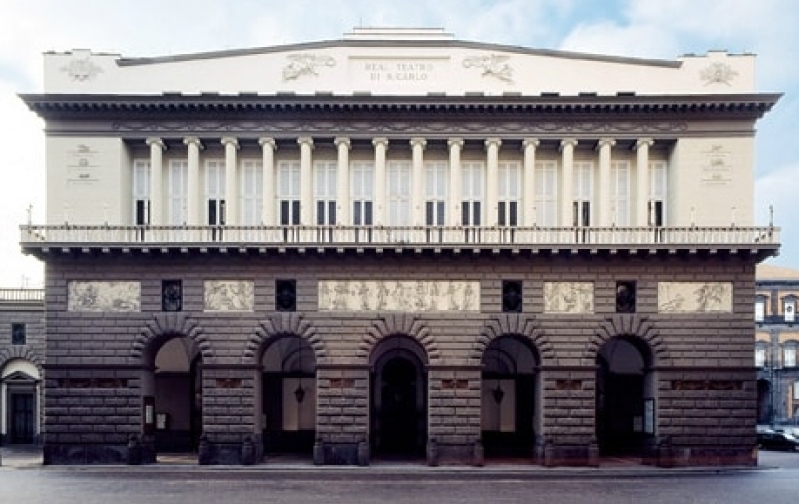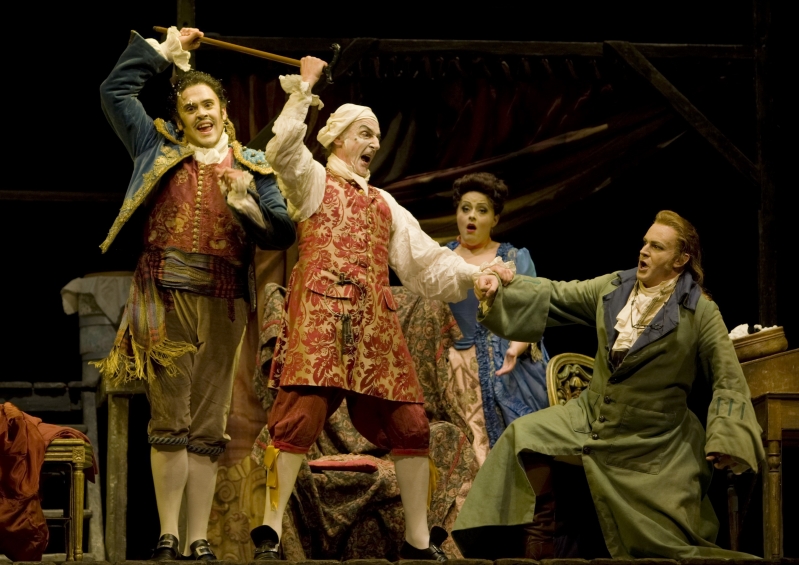
Settled by the Ancient Greeks around 2000 years BC, Naples is 1,300 years older than Rome. The city’s centro storico (historic centre) is a UNESCO World Heritage Site and its museums house some of Europe’s finest archaeology and art. Italy’s third largest city also boasts being the birthplace of modern pizza! As if that wasn’t enough, Naples is home to the oldest working theatre in Europe, Teatro di San Carlo.
As early as the 16th century there had been experiments linking drama and music in Naples, and it was in the city’s smaller theatres that traditional commedia dell’arte developed to what became known as opera buffa (comic opera). One of the first opera composers to be active in Naples was Scarlatti who was summoned by the Viceroy in 1684. Handel also spent three years honing his craft in Italy as a young man, composing a dramatic cantata in Naples in 1708 (Aci, Galatea e Polifemo). It was in 1737 that the first Bourbon of Naples, King Carlos III, put his backing behind ‘a work that unites magnificence and wonder. A theatre! The largest in Europe … destined to soon become the kingdom of opera music in the word’. San Carlo was built 41 years before Milan’s La Scala and 55 years before La Fenice in Venice.
It was with one of the most successful impresarios, Domenico Barbaja, that San Carlo truly flourished. He enticed Rossini, Bellini and Donizetti to work in Naples. Rossini’s first opera at San Carlo was performed on 4 October 1815, when he was just 23 years old. The overture to this opera Elisabetta, regina d’Inghliterra was first composed for a previous opera Aureliano in Palmira before finally attaching itself to one of the greatest comic operas ever composed,The Barber of Seville.

Donizetti moved to Naples in 1822, and during his time as resident composer for the Neapolitan theatres he usually wrote three or four operas a year. It’s no surprise that the Neapolitans nicknamed him Dozzinetti (dozzina meaning dozen in Italian). His operas for San Carlo include Maria Stuarda, Roberto Devereux and the timeless Lucia di Lammermoor. Donizetti lived in Naples for 16 years, but the plaque on his house quite ignores his operas and reminds us that he was the composer of Ti voglio bene assaje. In 1835 this song became the first winner of the Neapolitan popular song prize at the Festival of Piedigrotta, leading to the commercial birth of the genre which gave us the likes of Funiculì Funiculà and ‘O Sole mio.
All the great opera composers of the 19th century wanted their work performed in Naples. Several of Mercadante’s works were premiered at San Carlo, as well as Verdi’s Luisa Miller. We at WNO are very thankful that Teatro di San Carlo played such an integral part in the development of some of our favourite composers. San Carlo remains one of Italy’s top opera houses, staging opera, ballet and concerts. Until we are able to visit this incredible theatre at the heart of the history of opera you can explore Naples’s Teatro di San Carlo on Google Arts and Culture.



